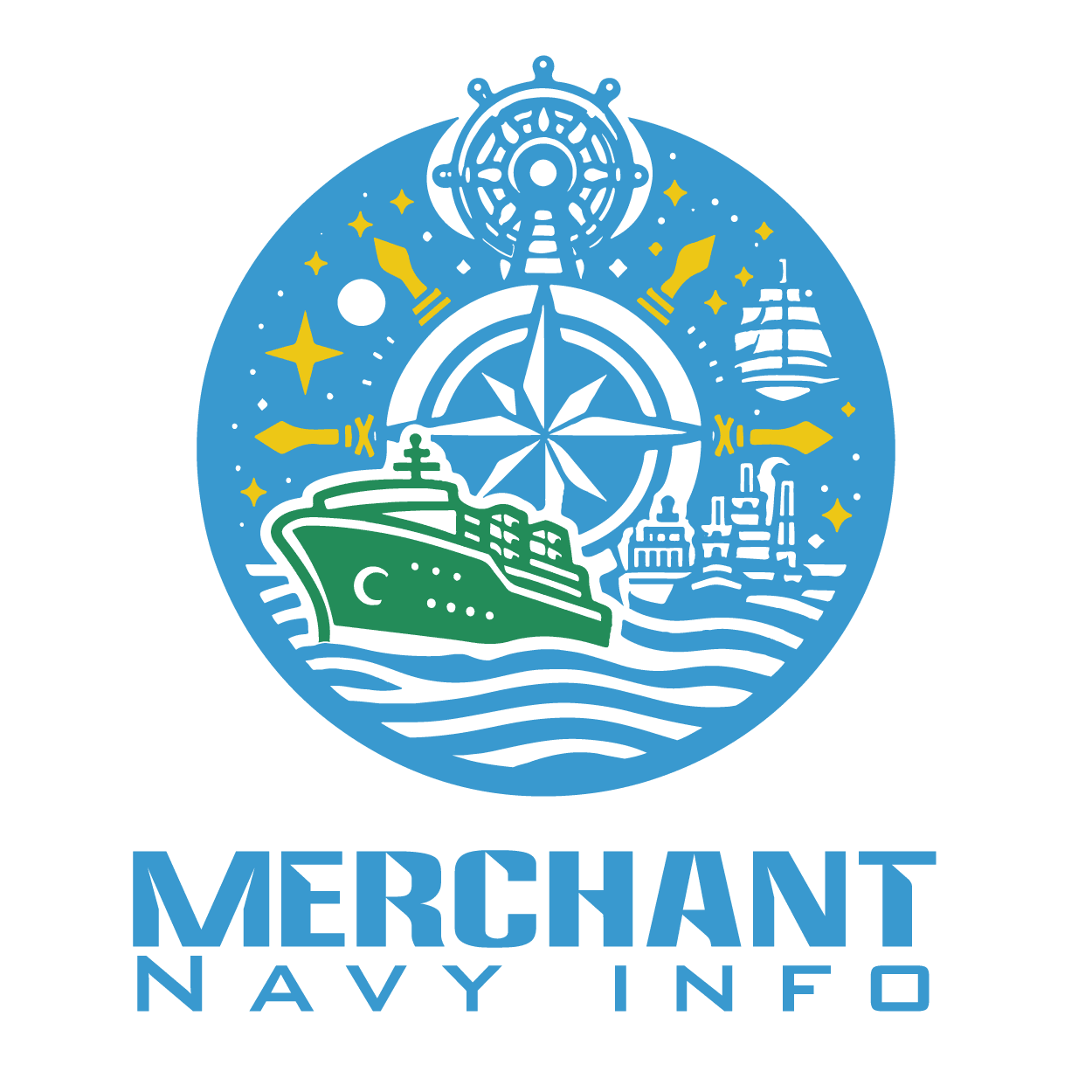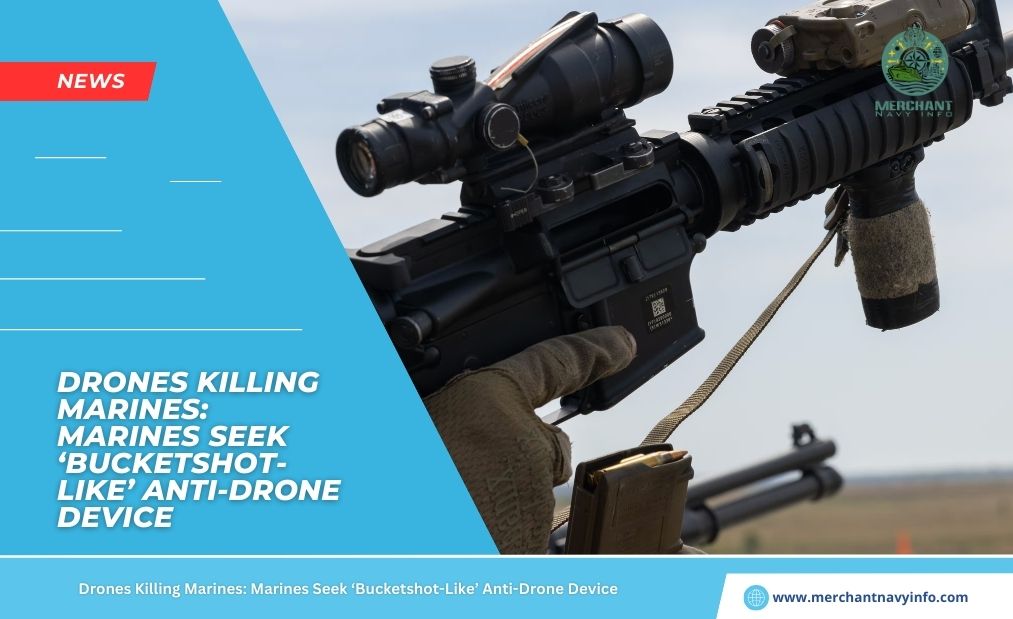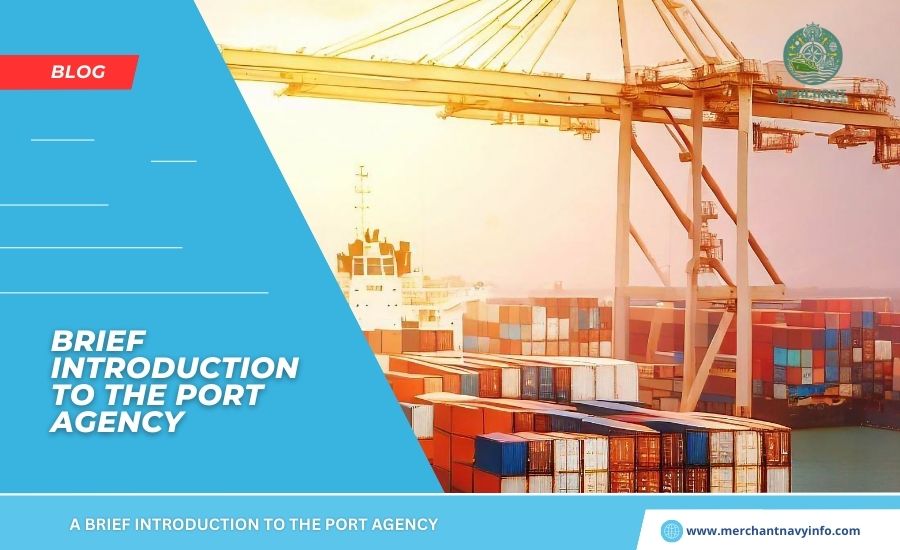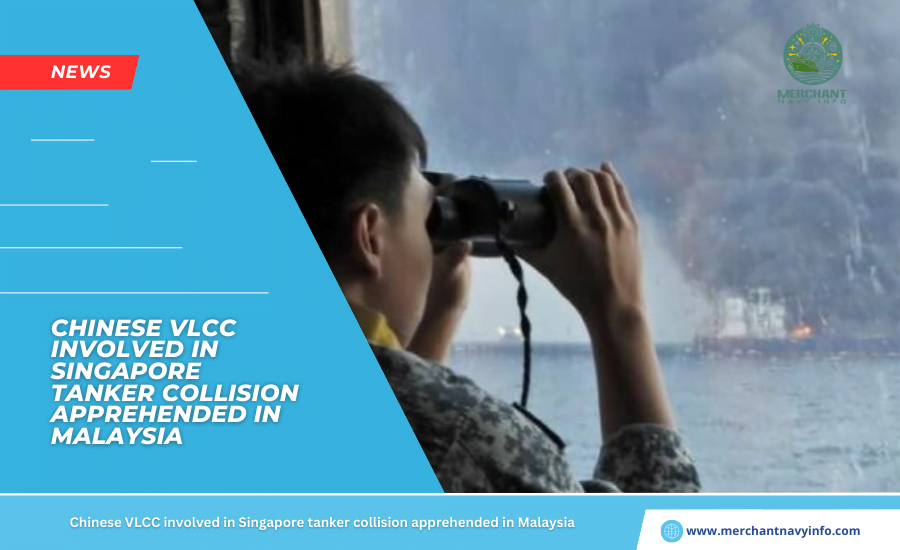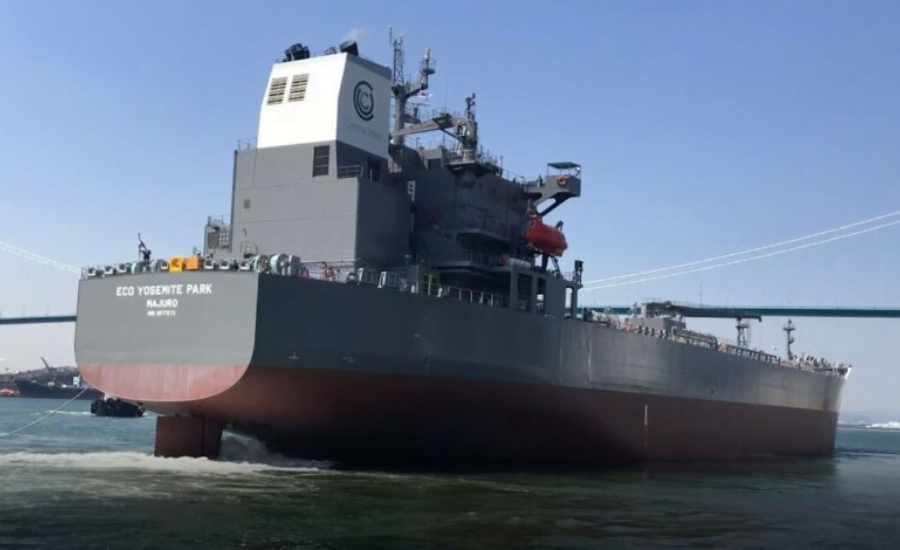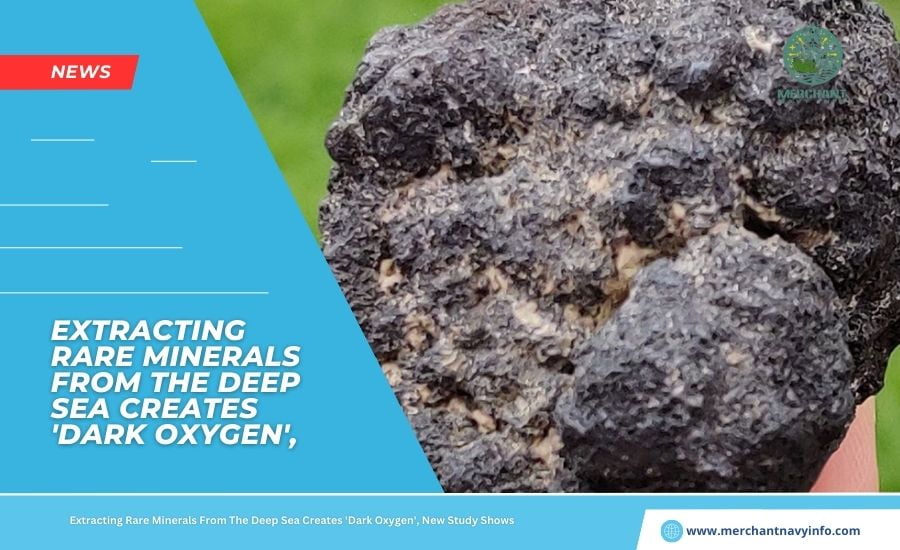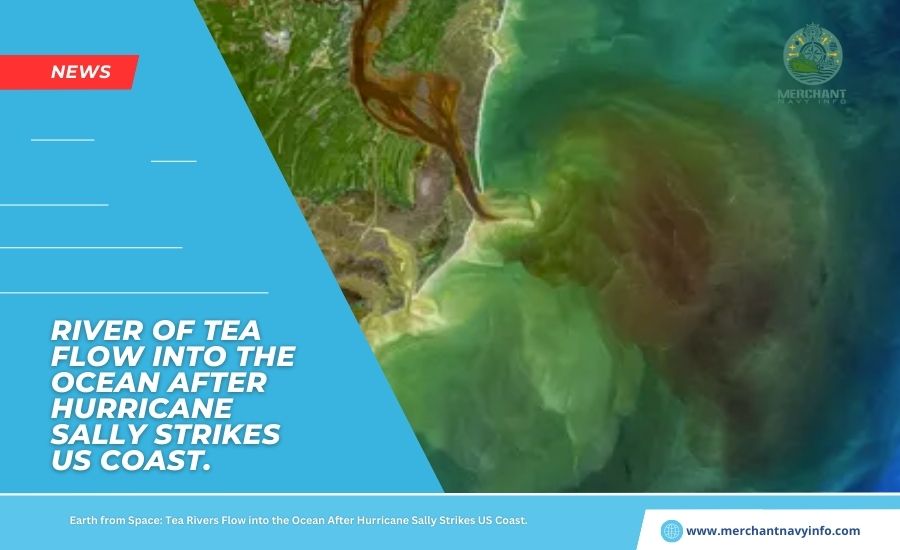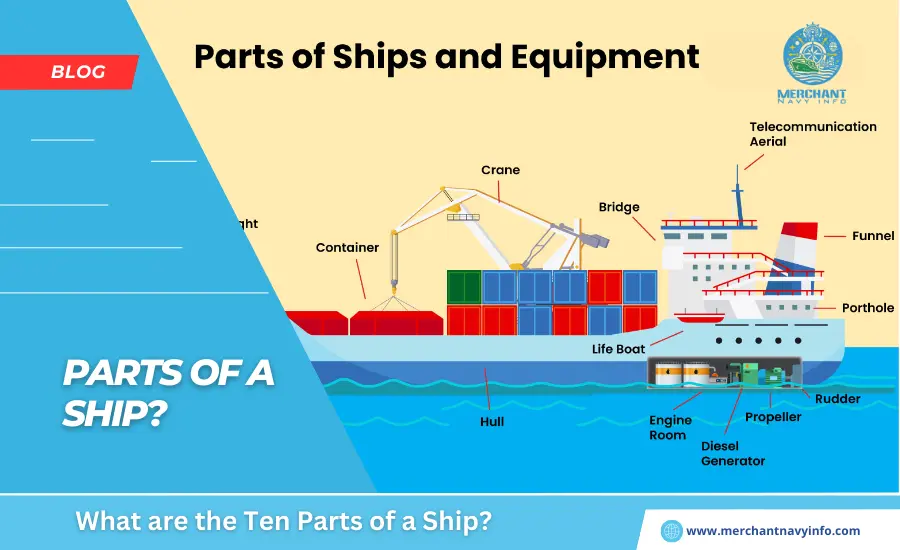
A ship is like a floating city made up of several different parts. However, it is impossible to imagine a ship without her three main parts: the hull, the engine room, and also the navigation bridge. A ship consists of both visible and invisible parts. For example, rudders, anchors, bows, keels, accommodations, propellers, masts, bridges, hatch bays, and also bow thrusters are common parts. In contrast, bulkheads, frames, holds, bunker tanks, double bottoms, spars, cofferdams, sidewalls, etc., are invisible parts of the ship.
To understand the parts of a ship, you need to understand some common terms. The front part of a ship is called the bow. The left side of a ship is called port, and also the right side is called starboard. Similarly, the front is called the front, and the back is called the rear. Next, we will explain the main parts common to all ship types.
Monkey Island
- Monkey Island is a type of deck located at the highest accessible height of a ship, directly above the bridge.
- This part of the ship, sometimes called the flying bridge, was once used by sailors for sun and stargazing. Additionally, it also has a built-in magnetic compass.
- This is an integral part of the ship, including the VDR pod, AIS Tx/Rx antenna, radar scanner mounted on the radar mast, Sat C/F77 Tx/Rx antenna, communications equipment, and various connected traps. It houses the propulsion unit. A yard for displaying flags, a weathervane, a mast leading to the ship’s “Christmas tree” (navigation lights), and also a stern whistle.
Bridge
- The bridge is a ship’s command center.
- Control the ship’s movement through navigational equipment.
- Controls critical deck machinery, main engines, and also ship navigation systems.
- A ship’s bridge typically performs the following functions. Control of ship speed and direction (navigation), monitoring of weather and sea conditions, determination of navigation and ship position, and also facilitation of internal and external communications.
Chimney
- A chimney or chimney is a ship’s chimney used to exhaust engine and boiler smoke.
- Exhausting exhaust gases from the deck is the statutory purpose of the chimney.
Accommodation
- The accommodation area is the base for crew and living. It has all the facilities: offices, gym, crew cabin, hospital, salon, lounge, common areas, laundry, galley and also more.
- This is an important part of the ship and consists of a garbage disposal system, a freshwater system, a wastewater treatment plant, a “domestic” cooling system, a sewage system, and air conditioners for apartment buildings.
- A necessary part of the ship, providing space for relaxation, medical facilities, and catering.
Chimney Deck
- The chimney releases exhaust gases from the ship’s engine exhaust chamber into the atmosphere. It works similar to a factory chimney.
- Nowadays, special care is taken when discharging exhaust gases from chimneys to protect the atmosphere from pollution.
- These chimneys are never installed straight but are slanted back at an angle so that the exhaust gases do not obstruct the deck or navigation bridge.
Boat Deck
- The deck floor covers the ship’s hull structure. A ship may have multiple decks or deck sections. The top deck that is most exposed to the elements is the main deck or weather deck.
- Based on the position of the ship’s deck, there are six main types of decks: Main deck, aft deck, upper deck, lower deck, weather deck, and foredeck.
- The primary functions of a boat deck are to support the hull structure, serve as a working and standing floor, and provide protection from the elements.
Mast
- A mast is a long girder assembly mounted approximately perpendicular to the ship’s centerline.
- Serves several purposes, including transporting drilling rigs, establishing navigation lights, prominent piers, radio or radar antennas, and base altitude for scanners.
Flying Bridge
- An extended area on the weather deck or open area of the superstructure provides the navigator with an unobstructed view of the front, rear, and sides of the ship.
- Also serves as an operating station for Guard officers and crew.
- Also includes her two sets of controls, which are important for captains, sailors, and pilots when docking and disembarking a ship.
Stem
- The front part of the boat or bow is called the ship’s stem.
- The keel itself extends to the muzzle and forms a curved end called the ship’s stem.
- These stems come in two styles. There are sloping and vertical stems, the former inclined at an angle to the water line and the latter perpendicular to the water line.
Foredeck
- The foredeck is one of the forwardmost parts of a ship and is less than 7% of the total length of the deck.
- Originally used on warships by soldiers to take defensive positions using the forecastle.
- But now forecastles serve many functions, including B. To hold, secure, and secure the most important parts of the ship.
Bow bulge
- A protruding bulge on the bow just below the W/L.
- Blocks out water and optimizes water flow around the hull, increasing ship speed, fuel consumption, and stability.
- A 12-15% increase in fuel efficiency has been observed for ships with bulbous bows.
- It also increases the buoyancy at the front of the ship and reduces the pitch to some extent.
Rear
- The rear structure is designed for low resistance, high propulsion efficiency, and vibration prevention.
- It is the rearmost part of a ship that prevents water from entering.
- The rudder and propeller are suspended at the stern.
- The stern may be flat, canoe-like, tapered, or sharply shaped for the purpose of blocking water in the channel.
Aft Deck
- Serves as the roof for the stern cabin.
- Makes it easier for the captain and helmsman to supervise the entire crew.
- However, in modern ships, the stern deck is located either in the center of the ship or on the starboard side.
Side Thruster
- These resemble propellers and are mounted on either side of the bow.
- Useful for maneuvering ships at low speeds in congested waters near ports and canals.
- These are also called tunnel thrusters.
- Side thrusters have a significant impact on a vessel’s total cost of ownership. These can be hydraulically or electrically driven.
Rudder
- The propeller drives the ship and the rudder controls the ship because without steering you cannot move the vehicle in the desired direction. The rudder is a flat, hollow structure housed behind the propeller.
- It consists of the following parts: Rudder trunk, movable flaps, main rudder blade, hinge system, connections, and rudder support bearing. There are three types of rudders: balanced type, semi-balanced type, and unbalanced type.
- As an important part of a ship, the rudder is equipped with a rudder system that controls the movement of the rudder. This is based on Newton’s third law of motion.
Propeller
- A mechanical device with blades attached to a central shaft. These rotor blades rotate, and their rotational energy is converted into pressure energy, which causes the propeller to generate the thrust needed for propulsion. It pushes seawater backward, also which helps the ship move forward.
- The motor, shaft, and propeller together form a drive unit. For the propeller material, use an alloy such as aluminum, bronze, or manganese, which has excellent corrosion resistance. There are one, two, or three propellers.
- It is the most important part of the ship, and without it, the ship cannot move. Therefore, the main function of a propeller is to create thrust in the water to move the ship forward. Its working principle is Newton’s third law of motion and Bernoulli’s theorem.
Paint Room
- Ocean-going ships require a small onboard area for handling and storage of paint. This room is called the painting room.
- Special precautions apply in the painting room to prevent explosions and the release of chemical gases and vapors from the enamel.
- Paint rooms require explosion-proof lighting and also brackets for flexible assembly and storage of paint.
Emergency Generator Room
- In the event of a main power failure, a small separate generator provides power to the emergency load. This is called an emergency generator.
- It is located on the top deck, away from the main engine, auxiliary equipment, and also collision bulkhead, with a dedicated control panel installed around it.
- This generator must be easy to operate and start at 0°C.
